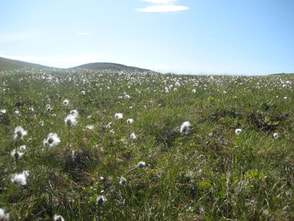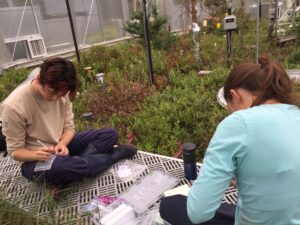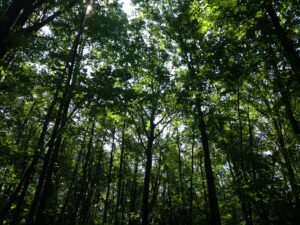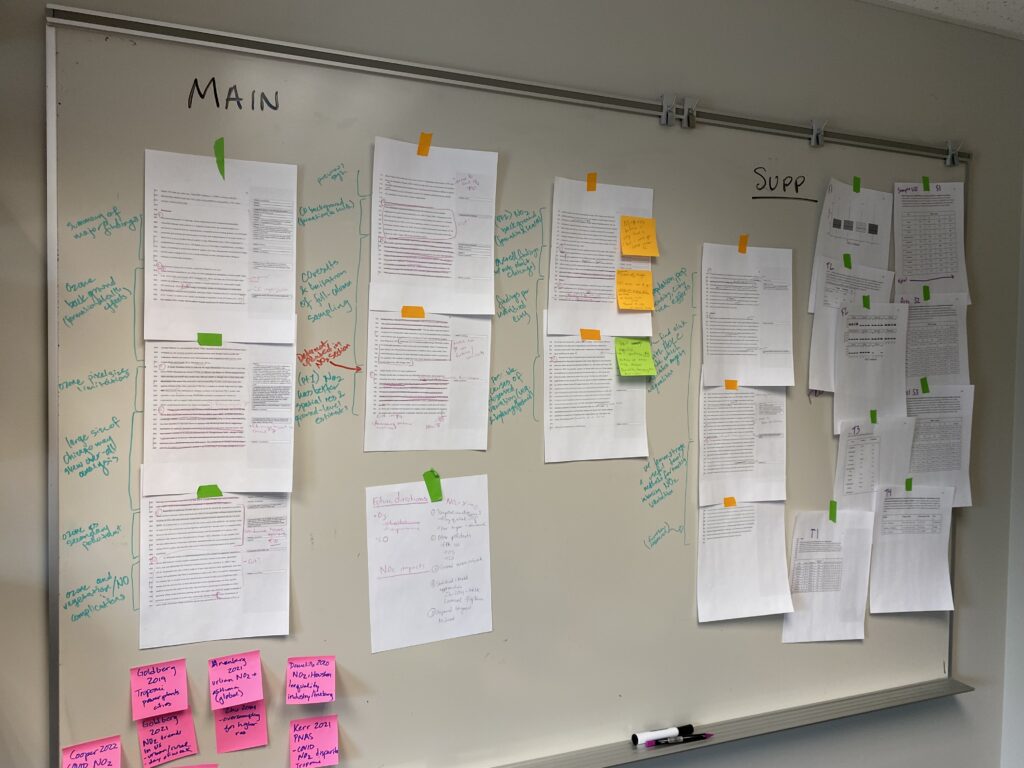
Complexity and change in the warming Arctic tundra
- The Arctic is the most rapidly warming region on Earth. Warmer temperatures in the winter and summer has led to cascading impacts that reach nearly every element in the tundra ecosystem. My graduate research focused on changes of warming, increased soil nutrient availability, and altered seasonality and their effects on leaf-level carbon cycling in common tundra plant species. Specifically, these studies (Heskel et al. 2012, Heskel et al. 2013, Heskel et al. 2014, Heskel et al. 2014) measured variables of leaf respiration and carbon use that might help explain how woody shrub species are increasingly dominant in a warming tundra.
- Current research in the Arctic focuses on a unique tundra landmass – the Yamal Peninsula in Central Siberia. Since 2019, I have been part of an NSF-funded working group to develop integrated ecological research in Yamal. In Summer 2021, the research team was awarded an NSF grant (2022-2027) to study how reindeer migration, Indigenous groups, and shrub growth has been altered due to recent climate change and infrastructure development in the region. These funds will allow me to study shrub and plant diversity across a tundra-type gradient in Yamal with Macalester students. *Due to the war in Ukraine, all field-based research in Russia has been suspended indefinitely, and shifted to the Varanger Peninsula in Norway*
- Field work in the Varanger Peninsula, Norway will commence in Summer 2023 and will continue in Summers of 2024 and 2025 with undergraduates from Mac!

How Do Plants Alter Their Carbon Cycling Under Different Environments?
- Changes in short and long-term temperature and light environments impact how plants photosynthesize and respire through a shift termed ‘acclimation’. This can have massive impacts on how carbon is modeled at the ecosystem and global scales.
- In previous research, I have studied the short-term temperature response of leaf respiration in plants from around the world (Heskel et al. 2016), and found this response can be represented as a simple model across diverse climates and biomes.
- I also research how light can suppress rates of respiration, which can be important to calculate how much carbon is actually being assimilated in ecosystems (Heskel et al. 2013; Heskel and Tang, 2018; Heskel 2018; Schmiege et al. 2023)
- Recently, I’ve worked with students at Macalester’s Ordway field station to examine how two understory trees vary in their carbon cycling and fluorescence through the growing season. The work we did in summer 2019 is now published in AoB-PLANTS (Heskel et al. 2022), and includes 5 undergraduate co-authors, as well as 2 faculty collaborators from Macalester.

How can we model impacts of historic and future CO2 levels on plant function?
- Atmospheric CO2 is rising steadily, now surpassing 420 ppm at its most recent highs. This shift impacts plant form and function, and can also be tracked historically through plant stomata and radiocarbon isotopes.
- Research in my lab, started by Jennings Mergenthal (’21) looks at historic herbarium specimens and how they have shifted with historic CO2 levels.
- I am also interested in radiocarbon as a proxy for fossil fuel emissions in urban plants – work with Elizabeth Hrycyna (’21) has found patterns linked to both species differences and historic redlining in Saint Paul, and this led to a larger study on air quality in midwestern cities.
- There are also opportunities to model and measure future CO2 using FACE experiments at Cedar Creek and SPRUCE, globally famous ecological experiments, both in Minnesota.

Student-Centered Urban Ecological Research
- Undergraduate research and serving as a mentor to students navigating novel research ideas is fundamental to my role as a professor at Macalester. Sometimes this means taking a totally new research direction – some examples of how we have incorporated new methods and ideas below:
- Elizabeth Hrycyna (’21) used satellite data from TROPOMI via Google Earth Engine to examine NO2 variation in US Midwestern cities, and how it might align with historic redlining. This study started as an Honors thesis in Spring 2019, and evolved a lot over time – from a field-based idea, to a database idea, to remote sensing. With support from collaborators Saiido Noor (’23) and Jennings Mergenthal (’21), this study turned into a manuscript that is now published in Elementa ! You can read more about work here.
- In Summer 2023, a team of 4 students will examine impacts of Ash removal campaigns in Saint Paul on environmental and biological variables to address the question: “What else is lost when we remove trees and what does this loss exacerbate under climate change?”